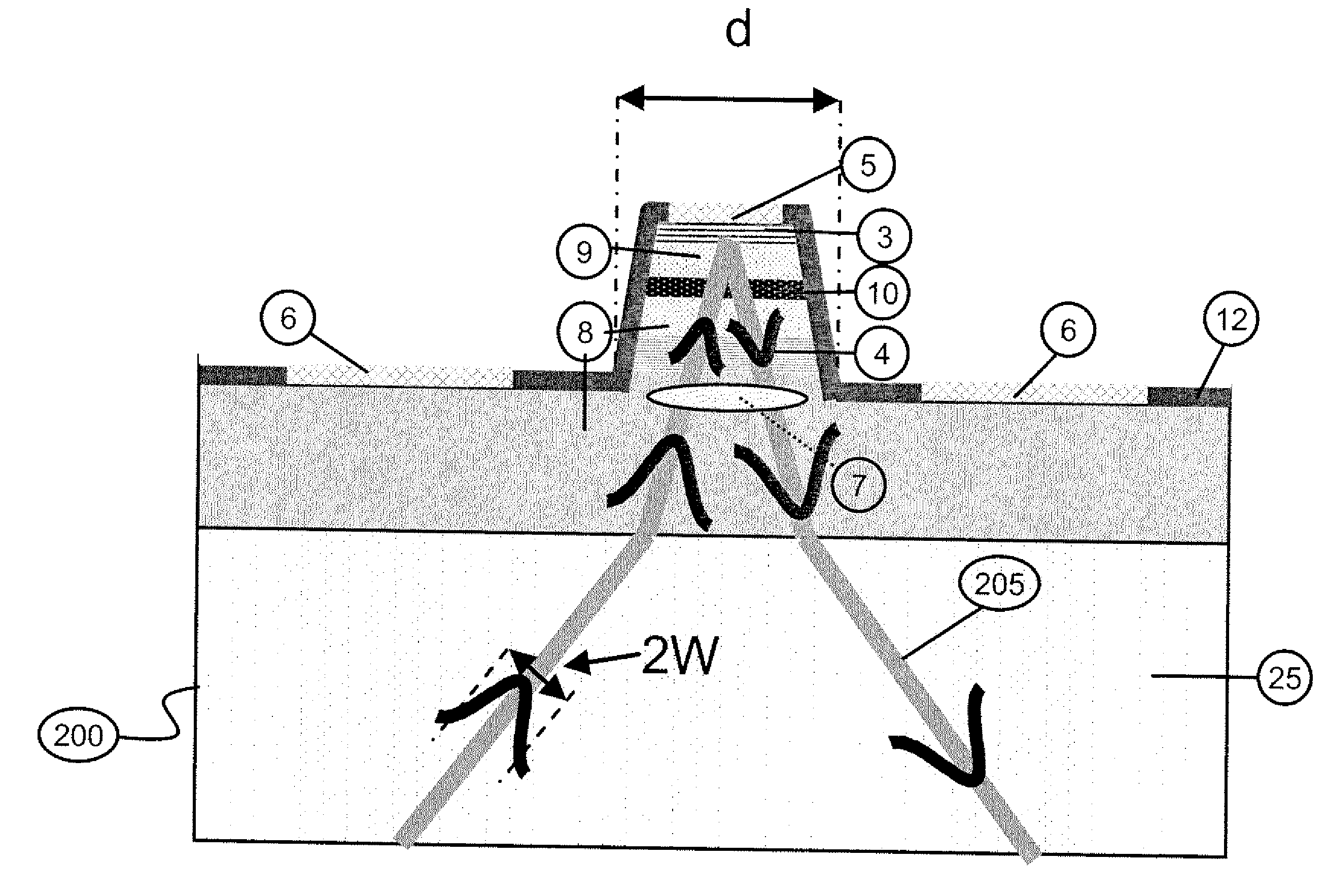Electrically-Pumped Semiconductor Zigzag Extended Cavity Surface Emitting Lasers and Superluminescent Leds
a laser and superluminescent technology, applied in semiconductor lasers, laser optical resonator construction, laser details, etc., can solve the problems of difficult to achieve high power output from large area and volume of gain material, design to suppress parasitic lasing is common, and the geometry of zigzag lasers has previously proved impractical for implementing efficient, etc., to achieve the effect of amplifying power
- Summary
- Abstract
- Description
- Claims
- Application Information
AI Technical Summary
Benefits of technology
Problems solved by technology
Method used
Image
Examples
Embodiment Construction
[0028]Embodiments of the present invention are directed to new types of high brightness surface emitting semiconductor lasers and superluminescent LEDs using a single chip optical amplifier having a plurality of electrically pumped semiconductor gain elements optically coupled to each other by a zigzag optical path within a low optical loss substrate. The optical amplifier chip permits a higher cumulative optical gain than is possible with an individual gain element, which supports high power amplifier or laser operation and the use of a wide variety of different semiconductor materials at different wavelengths, including the blue and ultraviolet. Additionally, individual gain elements may be separately modulated as reverse-biased p-n junction modulators to adjust the optical loss for gain-switching or mode-locking. The optical amplifier chip has applications that include its use as a surface emitting laser, a superluminescent LED (SLED), intra-cavity frequency doubled laser, or ext...
PUM
 Login to View More
Login to View More Abstract
Description
Claims
Application Information
 Login to View More
Login to View More - R&D
- Intellectual Property
- Life Sciences
- Materials
- Tech Scout
- Unparalleled Data Quality
- Higher Quality Content
- 60% Fewer Hallucinations
Browse by: Latest US Patents, China's latest patents, Technical Efficacy Thesaurus, Application Domain, Technology Topic, Popular Technical Reports.
© 2025 PatSnap. All rights reserved.Legal|Privacy policy|Modern Slavery Act Transparency Statement|Sitemap|About US| Contact US: help@patsnap.com



